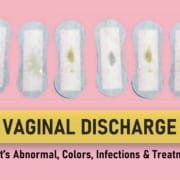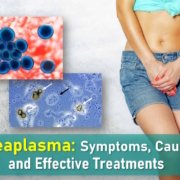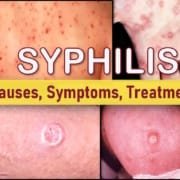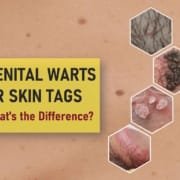Sexually Transmitted Diseases (STDs) Symptoms, Types and Precautions
What are Sexually Transmitted Diseases (STDs)?
sexually transmitted diseases (STDs) are infectious diseases passed from one person to another through unprotected sex or genital contact. STDs can cause severe damage to the body, even death. Except for colds and flu, STDs are the most common contagious (easily spread) infections, with millions of new cases each year. While certain sexually transmitted infections (STIs) can be effectively treated and cured, there are others for which no cure currently exists.
How are Sexually Transmitted Diseases, STDs transmitted?
A person with an STD can pass it to others by contact with skin, genitals, mouth, rectum, or body fluids. Anyone who has sexual contact vaginal, anal, or oral sex with another person may get an STD. STDs may not cause symptoms. Even if there are no symptoms, your health can be affected.
What causes Sexually Transmitted Diseases, STDs ?
STDs are caused by bacterial or viral infections. STDs caused by bacteria are treated with antibiotics. Those caused by viruses cannot be cured, but symptoms can be treated.
What are the Symptoms of Sexually Transmitted Diseases (STDs)?
The symptoms associated with sexually transmitted diseases (STDs) can vary depending on the specific type. It is entirely possible to remain asymptomatic. However, if symptoms do manifest, they are more likely to be evident in the genital region and may include:
For Men:
- Burning or itching sensation in the penis
- Discharge from the penis
- Pelvic pain
- Presence of sores, bumps, or blisters on the penis, anus, or mouth
- Burning and pain during urination or bowel movements
- Frequent urination
For Women:
- Burning or itching in the vagina
- Vaginal discharge or noticeable odor
- Pelvic pain
- Abnormal vaginal bleeding
- Deep-seated pain during sexual intercourse
- Presence of sores, bumps, or blisters in the vagina, anus, or mouth
- Burning and pain during urination or bowel movements
- Frequent urination
When do symptoms of Sexually Transmitted Diseases (STDs) usually appear?
The timeline for symptom onset varies depending on the specific STD. Some STDs may manifest symptoms within days or weeks, while in certain instances, symptoms might not become evident until several months or even years later. It is not uncommon for there to be minimal or no symptoms, potentially leading to a lack of awareness regarding the presence of an STD.
If there is any suspicion or possibility that you may have contracted an STD, it is advisable to undergo a confidential examination at a sexual health clinic or consult with your general practitioner (GP) for a thorough evaluation. Seeking timely medical attention is crucial for effective diagnosis, appropriate treatment, and preventing further complications.
How can you protect yourself from Sexually Transmitted Diseases (STDs) ?
The best way to prevent getting an STD is to not have any type of sexual activity, including oral, vaginal, and anal sex. But you can take several steps to lower your risk for an STD if you decide to become sexually active, or are currently sexually active. These include:
- Engage in sexual relationships exclusively with a single, uninfected partner who also maintains monogamy.
- Regularly use latex condoms properly during sexual activity, or opt for a female polyurethane condom along with a sperm-killing medication (topical microbicide).
- If injecting intravenous medicines, ensure the use of sterile needles.
- Take measures to prevent and manage other sexually transmitted infections (STDs), thereby reducing the risk of contracting human papillomavirus (HPV).
- Delay having sexual relationships as long as you can. The younger you are when you start having sex, the more likely you are to get an STD.
- Have regular checkups for HIV and other STDs.
- Familiarize yourself with the symptoms of sexually transmitted infections (STDs) and promptly seek medical assistance if any symptoms arise.
- Avoid engaging in sexual intercourse during periods.
- Don’t have anal intercourse.
- Don’t douche.
The Limits of Condoms
Although condoms are effective in reducing the transmission of certain STDs, they are not foolproof. Condoms provide better protection against gonorrhea, chlamydia, HIV, and trichomoniasis. However, their efficacy is somewhat limited when it comes to herpes, syphilis, and genital warts, as these infections can be transmitted through skin lesions not covered by a condom. It’s important to note that condoms offer minimal to no protection against crabs and scabies.
What to do when diagnosed with a Sexually Transmitted Diseases (STDs)?
- Begin treatment right away. Take the full course of medicines, and follow your doctor’s advice.
- Don’t breastfeed a baby or use breastmilk to feed a baby if you are HIV positive.
- Tell your local health department or all recent sexual partners and urge them to get medical checkups.
- Don’t have sexual activity while getting treatment for an STD.
- Have a follow-up test to be sure the STD has been successfully treated.
- If you are HIV positive, avoid breastfeeding or using breast milk to feed your baby.
- Inform your local health department and all recent sexual partners, encouraging them to undergo medical checkups.
- Refrain from engaging in sexual activity while undergoing treatment for an STD.
- Schedule a follow-up test to confirm the successful treatment of the STD.
How can Sexually Transmitted Diseases (STDs) impact pregnancy?
Contracting an STD during pregnancy can pose risks to the baby. Both gonorrhea and chlamydia can lead to health issues in the infant, ranging from eye infections to pneumonia. Syphilis may cause miscarriage or stillbirth. HIV infection can pass to a baby during a vaginal birth.
If you are pregnant and you or your partner have had or may have an STD, inform your gynecologist. Your baby may be at risk. Tests for some STDs are offered during prenatal care. It is best to treat the STD early to decrease the chances that your baby will get the infection. You and your partner both may have to be treated.
What are some common types of STDs?
Common STDs are listed below: –
Human immunodeficiency virus (HIV)
HIV, a virus that undermines the body’s ability to combat infections, may remain asymptomatic for an extended period. However, without early diagnosis and treatment, individuals are susceptible to numerous life-threatening diseases and certain cancers. Primarily transmitted through sexual activity or sharing needles for IV drug injection, HIV can also be passed from an infected mother to her baby during pregnancy, labor, delivery, or breastfeeding. Early awareness of an HIV-positive status during pregnancy allows for effective treatment, significantly reducing the risk of transmitting the virus to the child. For more details about HIV (Human Immunodeficiency Virus) read “HIV / AIDS: Symptoms, Diagnosis, Treatment, and Prevention”
Human Papillomavirus (HPV)
 Human papillomavirus (HPV) is a common sexually transmitted disease, with certain strains capable of inducing genital warts, also known as condylomas. These warts can manifest on the internal or external regions of the genitals, potentially spreading to adjacent skin or to sexual partners. Numerous other HPV strains, however, may be asymptomatic, rendering the infected individual unaware of their condition. In many instances, the virus spontaneously clears without causing significant health issues. Yet, if the infection persists, normal cells can undergo transformation, becoming abnormal. Women having high-risk HPV types, such as HPV 16 and 18, face an elevated risk of developing cervical cancer. Pap tests can identify abnormal cervical cells, and an HPV infection test can be conducted using the same sample if recommended by a healthcare professional.
Human papillomavirus (HPV) is a common sexually transmitted disease, with certain strains capable of inducing genital warts, also known as condylomas. These warts can manifest on the internal or external regions of the genitals, potentially spreading to adjacent skin or to sexual partners. Numerous other HPV strains, however, may be asymptomatic, rendering the infected individual unaware of their condition. In many instances, the virus spontaneously clears without causing significant health issues. Yet, if the infection persists, normal cells can undergo transformation, becoming abnormal. Women having high-risk HPV types, such as HPV 16 and 18, face an elevated risk of developing cervical cancer. Pap tests can identify abnormal cervical cells, and an HPV infection test can be conducted using the same sample if recommended by a healthcare professional.
An effective preventive measure against the strains of HPV associated with most cervical cancers is the HPV vaccine. This vaccine also provides protection against the majority of genital warts in both men and women, as well as anal cancer in men. Notably, even with treatment for genital warts, the virus persists in the body, potentially leading to the recurrence of warts. Additionally, certain HPV types can cause common warts on various body parts, such as the hands, though these typically do not pose significant health problems.
For pregnant women, a substantial presence of genital warts introduces complexities during vaginal delivery. If the growths obstruct the birth canal, necessitating medical intervention, a cesarean section may be recommended to ensure the safety of both the mother and the newborn. For more details about Human Papillomavirus (HPV) Infection read “Human Papillomavirus (HPV) Infection: Symptoms and Prevention”
Chlamydia

Chlamydia, the most reported STI in the U.S., affects both men and women, often with subtle symptoms. It may result in abnormal genital discharge and burning during urination. Untreated chlamydia in women can lead to complications such as pelvic inflammatory disease (PID), ectopic pregnancy, and infertility. Antibiotics effectively treat chlamydia, but its asymptomatic nature in many cases poses a challenge. Pregnant individuals with chlamydia risk transmitting the infection to their babies during childbirth, potentially causing eye infections or pneumonia and increasing the likelihood of premature birth. For more information see “Chlamydia: Causes, Symptoms, Treatment & Prevention“.
Genital herpes

Genital herpes, caused by the herpes simplex virus (HSV), presents with painful blisters or open sores in the genital area. Recurrent outbreaks may occur periodically, as there is no cure for HSV, though medication can alleviate symptoms. HSV can be transmitted from the mouth to the genitals during oral sex, even when no visible blisters are present (asymptomatic shedding). Transmission to infants during childbirth results in severe infections. For more information see “Genital Herpes: Symptoms, Pictures, and Medication“.
Gonorrhea
Gonorrhea manifests as a discharge from the vagina or penis and painful or difficult urination. Women face the most severe complications, including pelvic inflammatory disease (PID), ectopic pregnancy, and infertility. Antibiotic treatment is effective against gonorrhea, which can also affect the rectum. If present during childbirth, gonorrhea can spread to the baby, causing a severe eye infection. For more information about Gonorrhea see “Gonorrhea: Symptoms, Treatment & Prevention“.
Syphilis
 Syphilis initiates with a painless open sore, progressing to more advanced stages if untreated, including a rash and complications with the heart and nervous system. Antibiotics effectively treat syphilis, but if left untreated in pregnant women, it can lead to serious, even fatal, problems for the baby. Congenital syphilis’s impact on the infant depends on the duration of the maternal infection and whether timely treatment occurred, potentially resulting in miscarriage, stillbirth, or infant death. According to the CDC, untreated syphilis in pregnant women can lead to stillbirth or death in about 2 in 5 infants. For more details see “Syphilis: Symptoms, Causes, and Treatments“.
Syphilis initiates with a painless open sore, progressing to more advanced stages if untreated, including a rash and complications with the heart and nervous system. Antibiotics effectively treat syphilis, but if left untreated in pregnant women, it can lead to serious, even fatal, problems for the baby. Congenital syphilis’s impact on the infant depends on the duration of the maternal infection and whether timely treatment occurred, potentially resulting in miscarriage, stillbirth, or infant death. According to the CDC, untreated syphilis in pregnant women can lead to stillbirth or death in about 2 in 5 infants. For more details see “Syphilis: Symptoms, Causes, and Treatments“.
Trichomoniasis
Trichomoniasis is a common sexually transmitted infection (STI) caused by the parasite Trichomonas vaginalis. While many people with trichomoniasis don’t show symptoms, it can lead to discomfort, such as irritation, unusual discharge, and pain during urination. The infection is more common in women than men and is often associated with a higher risk of contracting other STIs, including HIV. Trichomoniasis is typically treated with antibiotics, and partners should be treated simultaneously to prevent reinfection. Practicing safe sex and routine STI testing are key preventive measures. For more details see “Trichomoniasis (Trich): Causes, Symptoms, Diagnosis & Treatment“.
Mycoplasma genitalium (Mgen)
Mycoplasma genitalium (Mgen) is a sexually transmitted bacterium first identified in the 1980s. Prevalence in the U.S. is estimated at 1-2% of adults, with global statistics suggesting a rising trend, making it a growing public health concern. Mgen is often asymptomatic, but when symptoms do appear, they may include urethritis, cervicitis, and pelvic inflammatory disease (PID). Treatment is becoming increasingly challenging due to rising antibiotic resistance, necessitating targeted approaches. Left untreated, Mgen can lead to complications such as infertility and chronic pelvic pain. Early diagnosis and treatment are essential to prevent long-term health consequences and curb its spread. For more details see “Mycoplasma Genitalium (Mgen): Symptoms, Causes & Treatment“.
Other diseases
Other diseases that may be sexually transmitted include:
- Bacterial vaginosis
- Chancroid
- Cytomegalovirus infections
- Lymphogranuloma venereum
- Granuloma inguinale (donovanosis)
- Molluscum contagiosum
- Scabies
- Pubic lice
- Vaginal yeast infections
Teens and Sexually Transmitted Diseases (STDs)
STDs affect men and women of all backgrounds and economic levels. But nearly half of all STDs cases happen in people younger than age 25. STDs are on the rise. This may be because more sexually active people have multiple sex partners during their life.
Many STDs cause no symptoms at initial stages. Also, many STD symptoms may look like those of other diseases not transmitted through sexual contact. This is especially true in women. Disturbingly, even asymptomatic STDs can be unknowingly transmitted to others.
Sexually Transmitted Diseases (STDs) in Women
Women bear a disproportionate burden of severe STD symptoms, and several factors contribute to this discrepancy. Some STDs have the capability to ascend into the womb (uterus) and fallopian tubes, leading to pelvic inflammatory disease (PID). The consequences of PID are dire, potentially resulting in infertility and tubal pregnancies. Furthermore, certain STDs in women heighten the risk of cervical cancer, underscoring the need for vigilant screening and preventive measures.
Complications extend beyond the individual, as STDs can be transmitted from a mother to her newborn before or during childbirth. While some infections in newborns can be effectively treated, others may result in permanent disabilities or, tragically, even death. The potential gravity of these outcomes emphasizes the critical importance of comprehensive prenatal care and timely interventions.
Final Thoughts
Despite the alarming prevalence of STDs, there is a silver lining in the fact that many of these infections can be successfully treated when diagnosed early. Early detection facilitates prompt medical intervention, reducing the risk of complications and the spread of the infection. As we navigate these challenges, awareness, education, and proactive healthcare practices emerge as essential tools in the collective effort to curb the rising tide of STDs among teens and young adults.










